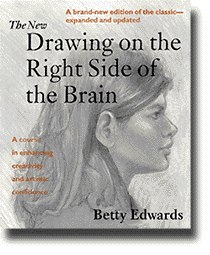TITLE: What We Know Affects What We See
AUTHOR: Eugene Wallingford
DATE: July 10, 2023 12:28 PM
DESC:
-----
BODY:
Last time
I posted this passage from Shop Class as Soulcraft, by
Matthew Crawford:
Countless times since that day, a more experienced mechanic has
pointed out to me something that was right in front of my face, but
which I lacked the knowledge to see. It is an uncanny experience;
the raw sensual data reaching my eye before and after are the same,
but without the pertinent framework of meaning, the features in
question are invisible. Once they have been pointed out, it seems
impossible that I should not have seen them before.
We perceive in part based on what we know. A lack of knowledge can
prevent us from seeing what is right in front of us. Our brains
and eyes work together, and without a perceptual frame, they don't
make sense of the pattern. Once we learn something, our eyes --
and brains -- can.
This reminds me of a line from the movie The Santa Clause,
which my family watched several times when my daughters were younger.
The new Santa Claus is at the North Pole, watching magical things
outside his window, and comments to the elf whose been helping him,
"I see it, but I don't believe it." She replies that adults don't
understand: "Seeing isn't believing; believing is seeing." As a
mechanic, Crawford came to understand that knowing is
seeing.
Later in the book, Crawford describes another way that knowing and
perceiving interact with one another, this time with negative results.
He had been struggling to figure out why there was no spark at the
spark plugs in his VW Bug, and his father -- an academic, not a
mechanic -- told him about Ohm's Law:
Ohm's law is something explicit and rulelike, and is true in the way
that propositions are true. Its utter simplicity makes it beautiful;
a mind in possession of this equation is charmed with a sense of its
own competence. We feel we have access to something universal, and
this affords a pleasure that is quasi-religious, perhaps. But this
charm of competence can get in the way of noticing things; it can
displace, or perhaps hamper the development of, a different kind of
knowledge that may be difficult to bring to explicit awareness, but
is superior as a practical matter. It superiority lies in the fact
that it begins with the typical rather than the universal, so it
goes more rapidly and directly to particular causes, the kind that
actually tend to cause ignition problems.
Rule-based, universal knowledge imposes a frame on the
scene. Unfortunately, its universal nature can impede perception
by blinding us to the particular details of the situation we are
actually in. Instead of seeing what is there, we see the scene as
our knowledge would have it.
This reminds me of a story and a technique from the book
Drawing on the Right Side of the Brain,
which I first
wrote about
in the earliest days of this blog. When asked to draw a chair, most
people barely even look at the chair in front of them. Instead, they
start drawing their idea of a chair, supplemented by a few
details of the actual chair they see. That works about as well as
diagnosing an engine by diagnosing your mind's eye of an engine,
rather than the mess of parts in front of you.
In that blog post, I reported my experience with one of Edwards's
techniques for seeing the chair, drawing the negative space:
One of her exercises asked the student to draw a chair. But, rather
than trying to draw the chair itself, the student is to draw the
space around the chair. You know, that little area hemmed in between
the legs of the chair and the floor; the space between the bottom of
the chair's back and its seat; and the space that is the rest of the
room around the chair. In focusing on these spaces, I had to actually
look at the space, because I don't have an image in my brain of an
idealized space between the bottom of the chair's back and its seat.
I had to look at the angles, and the shading, and that flaw in the
seat fabric that makes the space seem a little ragged.
Sometimes, we have to trick our eyes into seeing, because otherwise
our brains tell us what we see before we actually look at the scene.
Abstract universal knowledge helps us reason about what we see, but
it can also impede us from seeing in the first place.
What we know both enables and hampers what we perceive. This idea
has me thinking about how my students this fall, non-CS majors who
want to learn how to develop web sites, will encounter the course.
Most will be novice programmers who don't know what they see when
they are looking at code, or perhaps even at a page rendered in the
browser. Debugging code will be a big part of their experience this
semester. Are there exercises I can give them to help them see
accurately?
As I said in my previous post, there's lots of good stuff happening
in my brain as I read this book. Perhaps more posts will follow.
-----

